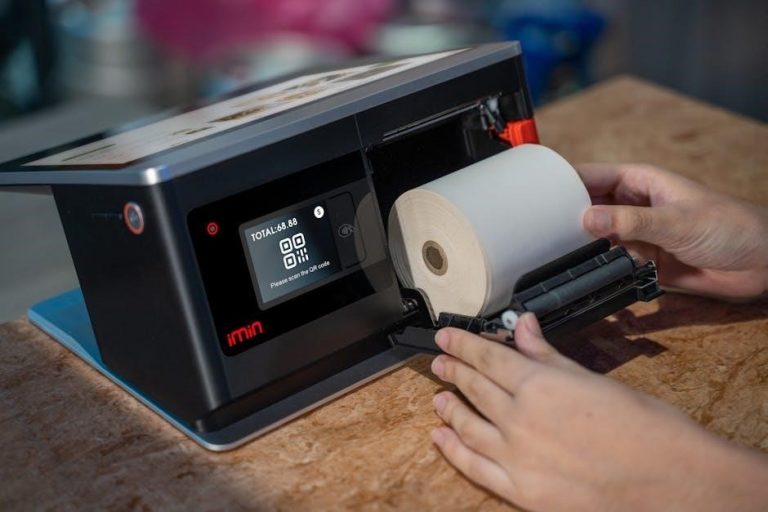Pelvic floor manual therapy is a non-invasive approach focusing on enhancing pelvic muscle function, addressing discomfort, and improving overall well-being through targeted techniques and personalized care.
1.1 What is Pelvic Floor Manual Therapy?
Pelvic floor manual therapy is a hands-on treatment approach focusing on the muscles, tissues, and joints of the pelvic region. It aims to restore function, alleviate pain, and improve mobility by addressing muscle imbalances, tightness, and restricted movement. Techniques include soft tissue mobilization, joint mobilization, and trigger point therapy, performed by trained therapists. This therapy is non-invasive and tailored to individual needs, promoting overall pelvic health and well-being.
1.2 Importance of Pelvic Floor Health
Pelvic floor health is crucial for maintaining core stability, bladder control, and sexual function. Weak or imbalanced pelvic muscles can lead to issues like incontinence, pain, and difficulty with daily activities. Prioritizing pelvic floor health prevents these problems, enhances overall well-being, and supports long-term physical function. It is essential for postpartum recovery, aging populations, and maintaining an active lifestyle, ensuring quality of life across all stages.
1.3 Brief History of Pelvic Floor Manual Therapy
Pelvic floor manual therapy traces its roots to ancient practices focusing on manual techniques for pelvic alignment and muscle balance. Modern approaches emerged in the 20th century, influenced by physical therapy and osteopathic traditions. Pioneers like Dr. Arnold Kegel developed exercises to strengthen pelvic muscles, laying the groundwork for contemporary methods. Over time, the therapy has evolved, incorporating advanced techniques and research, becoming a cornerstone in addressing pelvic floor dysfunction and improving overall pelvic health.
Benefits of Pelvic Floor Manual Therapy
Pelvic floor manual therapy offers relief from pain, improved bladder control, enhanced sexual health, and support for postpartum recovery, promoting overall core strength and pelvic stability.
2.1 Relief from Pelvic Pain
Pelvic pain can stem from muscle tension, poor posture, or trauma. Manual therapy targets these areas, easing discomfort by releasing tight muscles, improving circulation, and restoring proper pelvic alignment. Techniques like myofascial release and trigger point therapy help relax overactive muscles, reducing pain and enhancing mobility. This approach addresses both acute and chronic pain, offering a non-invasive solution that promotes healing and improves quality of life for individuals suffering from pelvic discomfort.
2.2 Improvement in Bladder Control
Pelvic floor manual therapy can significantly enhance bladder control by strengthening and stabilizing the pelvic muscles. Techniques such as soft tissue mobilization and myofascial release help improve muscle coordination and reduce symptoms of incontinence. This approach addresses issues like overactive bladder and stress incontinence, promoting better urinary function and confidence. By restoring proper muscle function, individuals can experience long-term improvements in bladder control and overall pelvic health.
2.3 Enhanced Sexual Health
Pelvic floor manual therapy can improve sexual health by enhancing muscle tone, reducing pain, and improving blood flow. Techniques like myofascial release address issues such as vaginismus or dyspareunia, promoting relaxation and comfort. Strengthening pelvic muscles can also heighten sensitivity and improve function, leading to better sexual experiences. Additionally, improved confidence and emotional well-being contribute to healthier intimate relationships, making pelvic floor manual therapy a valuable approach for sexual health.
2.4 Support for Postpartum Recovery
Pelvic floor manual therapy provides crucial support during postpartum recovery by strengthening weakened muscles, improving bladder control, and reducing pain. It helps restore pelvic muscle strength and elasticity, addressing postpartum-related issues like incontinence or discomfort. This therapy also promotes healing, enhances overall pelvic stability, and supports the body’s return to normal function after childbirth, offering a non-invasive and effective approach for new mothers.
2.5 Overall Core Strength and Stability
Pelvic floor manual therapy enhances core strength and stability by targeting the deep muscles that form the foundation of the pelvis and lower back. Strengthening these muscles improves posture, reduces back pain, and enhances athletic performance. By restoring proper muscle function and alignment, this therapy promotes long-term stability and efficiency in movement, benefiting both everyday activities and physical fitness, leading to better overall physical resilience and functional ability.

Techniques Used in Pelvic Floor Manual Therapy
Pelvic floor manual therapy employs various techniques to restore muscle function, reduce discomfort, and improve mobility, tailored to address specific needs and promote long-term pelvic health.
3.1 Soft Tissue Mobilization
Soft tissue mobilization involves gentle, targeted manual techniques to release tension in muscles, tendons, and connective tissue surrounding the pelvic floor. This approach helps improve circulation, reduce pain, and restore flexibility. By addressing scar tissue, adhesions, and muscle imbalances, it enhances pelvic floor function and overall mobility. Techniques are tailored to individual needs, ensuring a safe and effective treatment experience.
3.2 Myofascial Release
Myofascial release is a gentle, hands-on therapy targeting the fascia, the connective tissue surrounding muscles. It aims to release fascial restrictions, improve circulation, and restore normal movement. In pelvic floor therapy, this technique addresses tightness, scar tissue, and adhesions that may contribute to pain or dysfunction. By applying sustained, gentle pressure, practitioners help relax tense areas, enhancing flexibility and promoting natural healing. It is particularly effective for chronic pelvic pain and muscle tension.
3.3 Joint Mobilization
Joint mobilization involves targeted techniques to improve joint mobility and reduce stiffness in the pelvic region. It focuses on the sacrum, coccyx, and pubic symphysis, enhancing movement and alignment. Restricted joints can contribute to pelvic pain and dysfunction. Through gentle, controlled movements, joint mobilization restores normal joint mechanics, improves flexibility, and reduces discomfort. This technique is essential for addressing structural imbalances and promoting optimal pelvic floor function, making it easier to perform daily activities without strain.
3.4 Trigger Point Therapy
Trigger point therapy targets tight, painful muscle fibers in the pelvic floor. By applying gentle, sustained pressure to these areas, therapists relieve tension, improve blood flow, and restore muscle function. This technique addresses pain, stiffness, and limited mobility, often caused by overactive or strained muscles. Regular sessions can reduce discomfort, enhance flexibility, and improve overall pelvic floor stability, making it an effective tool for managing chronic pain and promoting long-term muscle health and relaxation.
3.5 Breathing and Relaxation Techniques
Breathing and relaxation techniques are essential in pelvic floor manual therapy to reduce muscle tension and promote healing. Deep diaphragmatic breathing helps calm the nervous system and relax the pelvic muscles. Mindfulness and guided relaxation exercises further enhance this process, improving blood flow and reducing pain. These techniques empower patients to manage stress and maintain pelvic floor health independently, complementing manual therapy for a holistic approach to well-being and recovery.
Who Can Benefit from Pelvic Floor Manual Therapy
Pelvic floor manual therapy supports individuals with pelvic pain, incontinence, or postpartum recovery, benefiting both men and women by enhancing muscle function and overall pelvic health naturally.
4.1 Individuals with Pelvic Floor Dysfunction
Individuals with pelvic floor dysfunction often experience symptoms like pain, incontinence, or difficulty with bowel movements. Pelvic floor manual therapy can help alleviate these issues by restoring muscle balance, improving circulation, and reducing tension in the pelvic region. Techniques such as soft tissue mobilization and myofascial release target the affected areas, promoting relaxation and strengthening weak muscles. This approach is tailored to address the specific needs of each patient, offering a holistic solution to improve quality of life.
4.2 Postpartum Women
Pelvic floor manual therapy is highly beneficial for postpartum women, aiding in recovery and healing after childbirth. It addresses issues like weakened pelvic muscles, incontinence, and scar tissue from cesarean sections. Techniques such as soft tissue mobilization and scar tissue release help restore muscle function, improve bladder control, and enhance overall pelvic floor stability. This therapy supports new mothers in regaining strength and confidence, promoting a smoother transition to postpartum life.
4.3 Athletes and Active Individuals
Athletes and active individuals can greatly benefit from pelvic floor manual therapy to improve core stability, enhance performance, and prevent injuries. High-impact activities often strain pelvic floor muscles, leading to issues like incontinence or discomfort. Manual therapy helps restore muscle balance, improve bladder control, and reduce pelvic pain, enabling athletes to maintain peak physical condition and recover more efficiently. It’s a valuable addition to training regimens for long-term pelvic health and optimal athletic performance.
4.4 Men with Pelvic Floor-Related Issues
Men experiencing pelvic floor dysfunction, such as chronic pain or urinary issues, can benefit from manual therapy. It helps address conditions like prostatitis or post-surgical recovery, improving bladder control and sexual health. By targeting muscle imbalances and tension, manual therapy enhances pelvic stability, reduces discomfort, and supports overall well-being. This approach is non-invasive and tailored to individual needs, making it an effective option for men seeking relief and improved pelvic floor function.
4.5 Elderly Population
Elderly individuals often experience pelvic floor issues due to aging, such as incontinence or pelvic instability. Manual therapy can help improve bladder control, reduce discomfort, and enhance mobility. Gentle techniques address muscle weakness and promote better posture. This approach is particularly beneficial for seniors, as it is non-invasive and adaptable to their specific needs, improving overall quality of life and supporting independent living with dignity and comfort.
How Pelvic Floor Manual Therapy Works
Pelvic floor manual therapy targets the muscles and tissues in the pelvic area, using techniques like soft tissue mobilization and joint adjustments to relieve tension and improve function. It’s a gentle, non-invasive approach designed to address a range of pelvic floor disorders and enhance overall pelvic health.
5.1 The Role of Pelvic Floor Muscles
The pelvic floor muscles form a supportive hammock for internal organs, aiding bladder and bowel control, sexual function, and core stability. They play a vital role in maintaining continence, supporting pelvic organs, and enabling proper posture and movement. Dysfunction in these muscles can lead to issues like incontinence or pelvic pain, making their proper functioning essential for overall pelvic health and well-being. Strengthening and balancing these muscles is central to pelvic floor manual therapy.
5.2 Assessment and Diagnosis
Assessment and diagnosis are crucial steps in pelvic floor manual therapy, involving a detailed patient history, physical examination, and possibly internal or external muscle evaluations. A thorough evaluation helps identify imbalances, weaknesses, or tightness in the pelvic floor muscles. This process enables therapists to pinpoint specific issues, such as poor muscle activation or scar tissue, and develop a targeted treatment plan tailored to the individual’s needs and goals.
5.3 Personalized Treatment Plans
Personalized treatment plans are tailored to address individual needs, focusing on muscle imbalances, pain, or functional goals. Each plan incorporates specific techniques like soft tissue mobilization or myofascial release, along with exercises and lifestyle modifications. Regular follow-ups ensure progress tracking and adjustments, optimizing outcomes and promoting long-term pelvic floor health and stability.

Training and Certification for Pelvic Floor Manual Therapy
Training involves advanced education in anatomy, physiology, and manual techniques, ensuring practitioners provide skilled, evidence-based care for optimal patient outcomes.
6.1 Education and Background Required
Practitioners typically require a degree in physical therapy, occupational therapy, or a related field. A strong foundation in anatomy, physiology, and biomechanics is essential. Specific coursework or training in pelvic health, including manual therapy techniques, is necessary; Clinicians should also gain practical experience in assessing and treating pelvic floor disorders, often through supervised clinical practice or specialized workshops.
6.2 Certification Programs
Certification programs in pelvic floor manual therapy provide specialized training for healthcare professionals. These programs combine theoretical knowledge with hands-on practice, focusing on advanced techniques for assessing and treating pelvic floor disorders. Certification ensures practitioners are proficient in evidence-based methods, enhancing their ability to deliver effective care. Such programs are often offered by reputable organizations and require completion of coursework, clinical hours, and competency assessments.
6.3 Continuous Professional Development
Continuous professional development is crucial for pelvic floor manual therapy practitioners; It involves ongoing education, workshops, and staying updated with the latest research and techniques. Professionals engage in regular training to refine their skills, ensuring they provide evidence-based care. Mentorship programs and peer collaboration also play a key role in fostering growth. By committing to lifelong learning, practitioners maintain high standards of competency and deliver optimal outcomes for their patients.

Common Misconceptions About Pelvic Floor Manual Therapy
Pelvic floor manual therapy is often misunderstood, with myths surrounding its purpose, benefits, and target audience. These misconceptions can hinder individuals from seeking potentially life-changing treatment options.
7.1 Myth: Only for Women
A common misconception is that pelvic floor manual therapy is exclusively for women. In reality, men also experience pelvic floor dysfunction, such as chronic pain or urinary issues. Conditions like prostatitis or post-prostate surgery complications can benefit from this therapy. It addresses bladder control, sexual health, and overall pelvic stability for both genders. This treatment is inclusive, offering tailored solutions for diverse needs, regardless of gender.
7.2 Myth: It’s Painful
Pelvic floor manual therapy is often misunderstood as being painful. In reality, techniques like soft tissue mobilization and myofascial release are gentle and designed to promote relaxation. While mild discomfort may occur during initial sessions, it typically subsides as muscles release tension. The goal is to reduce pain and improve function, not cause it. Open communication with your therapist ensures a comfortable experience, making this therapy a safe and effective option for many.
7.3 Myth: Immediate Results
Many believe pelvic floor manual therapy delivers instant results, but like any therapeutic approach, it requires time. Progress is gradual, with consistent sessions often needed to achieve lasting improvement. While some may notice subtle changes early on, full benefits emerge over weeks or months. Patience and commitment are key, as the body adapts and responds to the therapy. It’s a journey toward healing and strength, not an overnight solution.
Integration with Other Therapies
Pelvic floor manual therapy integrates seamlessly with other therapies, enhancing treatment outcomes by addressing the body holistically. This collaborative approach offers comprehensive care, improving both physical and functional well-being.
8.1 Physical Therapy
Pelvic floor manual therapy often complements physical therapy, which focuses on strengthening muscles, improving mobility, and enhancing overall pelvic floor function. Together, they address musculoskeletal imbalances, promote healing, and restore optimal movement patterns; Physical therapy’s structured exercises and modalities, such as stretching or biofeedback, can enhance the effectiveness of manual therapy techniques, providing a holistic approach to rehabilitation and long-term pelvic health.
8.2 Yoga and Pilates
Yoga and Pilates are excellent complements to pelvic floor manual therapy, focusing on core strength, flexibility, and body awareness. These practices incorporate breathing techniques and controlled movements to enhance pelvic floor muscle activation. By improving posture, balance, and overall body alignment, they support the therapy’s goals of restoring pelvic floor function and promoting long-term stability. Regular practice can also reduce stress and improve mindfulness, further benefiting pelvic health.
8.3 Acupuncture
Acupuncture, an ancient holistic practice, enhances pelvic floor manual therapy by targeting specific energy points to improve circulation and reduce tension. It addresses pain, bladder issues, and sexual dysfunction by stimulating healing and relaxation. Acupuncture’s ability to restore balance complements the manual techniques, offering a comprehensive approach to pelvic health. Combined, they promote physical and emotional well-being, aiding recovery and preventing future complications effectively.
Success Stories and Case Studies
Patient testimonials and clinical case studies highlight the positive impact of pelvic floor manual therapy, showcasing symptom relief and improved quality of life for many individuals.
9.1 Patient Testimonials
Patients often share remarkable stories of relief from chronic pain, improved bladder control, and enhanced sexual health. Many report regaining confidence and returning to normal activities, highlighting the therapy’s transformative impact.
9.2 Clinical Case Studies
Clinical case studies demonstrate the effectiveness of pelvic floor manual therapy in addressing conditions like chronic pain, incontinence, and postpartum recovery. Documented cases highlight measurable improvements in symptoms, quality of life, and functional outcomes. These studies provide evidence-based insights, showcasing how tailored interventions lead to lasting benefits for patients with diverse pelvic floor challenges.

The Future of Pelvic Floor Manual Therapy
The future holds promise with advancing techniques, increased awareness, and research driving innovation. This therapy is poised to become a cornerstone in holistic pelvic health care globally.
10.1 Advances in Techniques
The future of pelvic floor manual therapy is promising, with advancements in techniques leading to more effective and personalized treatments. Innovations include enhanced manual therapy methods, integration of advanced technologies, and a focus on patient-specific approaches. These developments aim to optimize outcomes, ensuring better relief and recovery for individuals with pelvic floor-related issues.
10.2 Increased Awareness
Greater public awareness of pelvic floor health is driving demand for manual therapy, reducing stigma, and encouraging earlier intervention. Educational campaigns, media coverage, and advocacy efforts are helping individuals understand the benefits of this therapy. As awareness grows, more people are seeking professional guidance, leading to better care and empowerment for those experiencing pelvic floor-related issues.
10.3 Research and Evidence-Based Practice
Research is crucial in advancing pelvic floor manual therapy, with studies validating its effectiveness in addressing pain, improving bladder control, and enhancing sexual health. Ongoing clinical trials explore new techniques and tools, ensuring treatments remain evidence-based. This focus on scientific validation leads to improved patient outcomes, reinforcing the therapy’s role in modern healthcare.
Pelvic floor manual therapy is a vital approach for addressing pelvic health issues, offering relief from pain, improving bladder control, and enhancing sexual well-being. By integrating with other therapies like physical therapy and yoga, it provides holistic care. As awareness grows and research evolves, this therapy continues to empower individuals, promoting long-term pelvic health and overall quality of life with personalized and evidence-based solutions.




